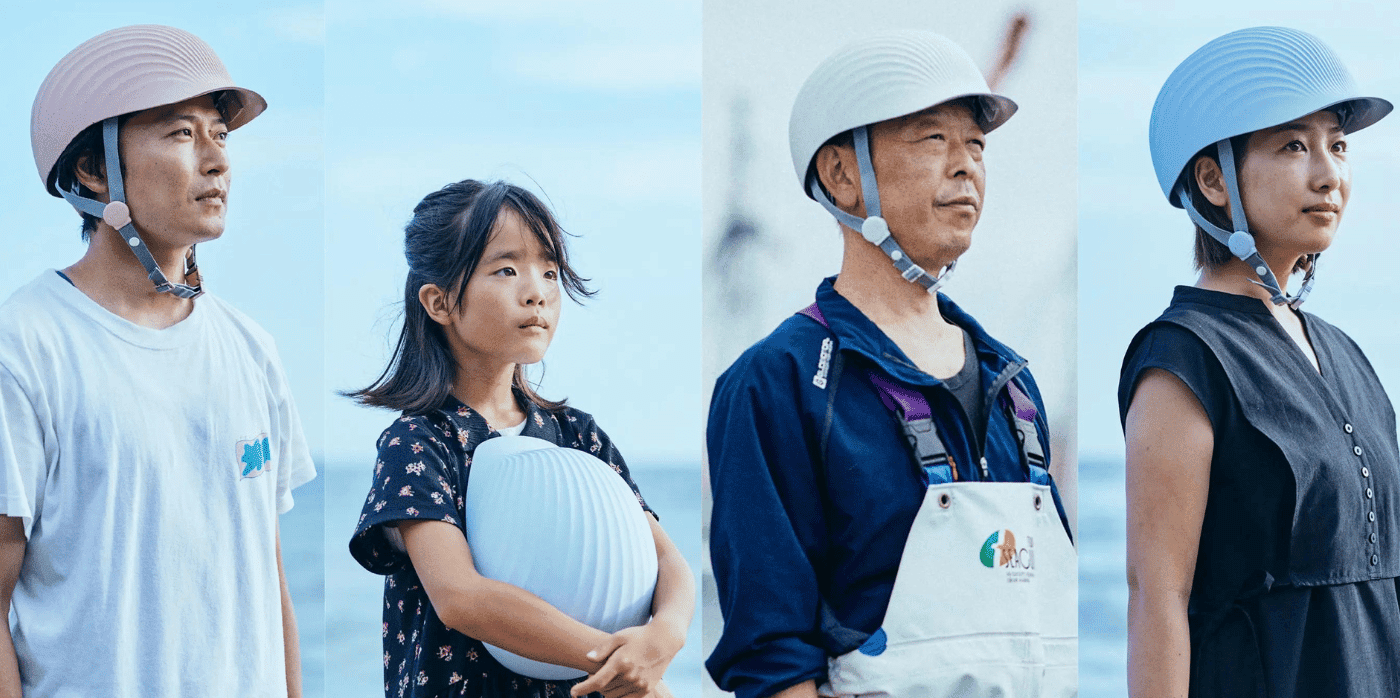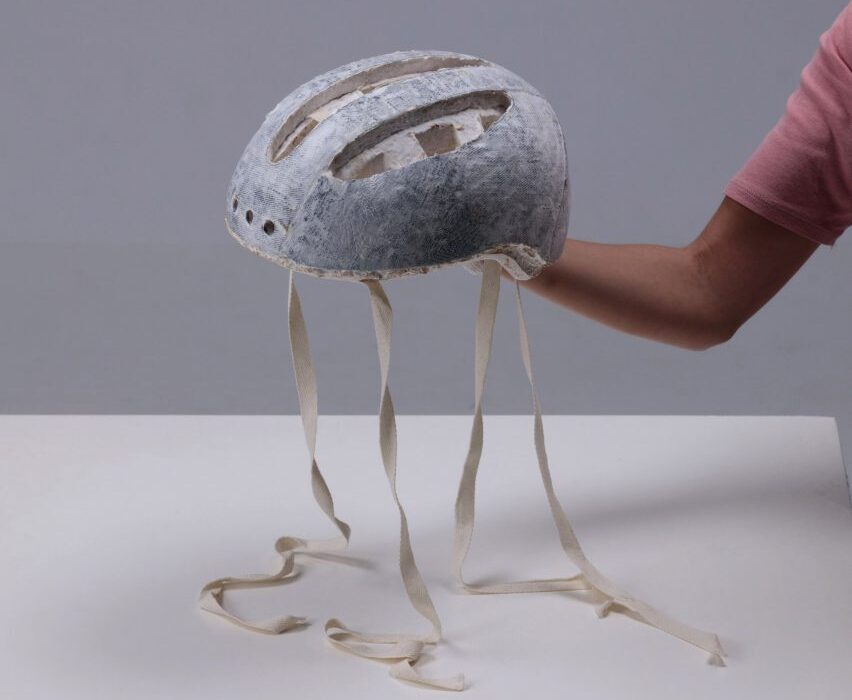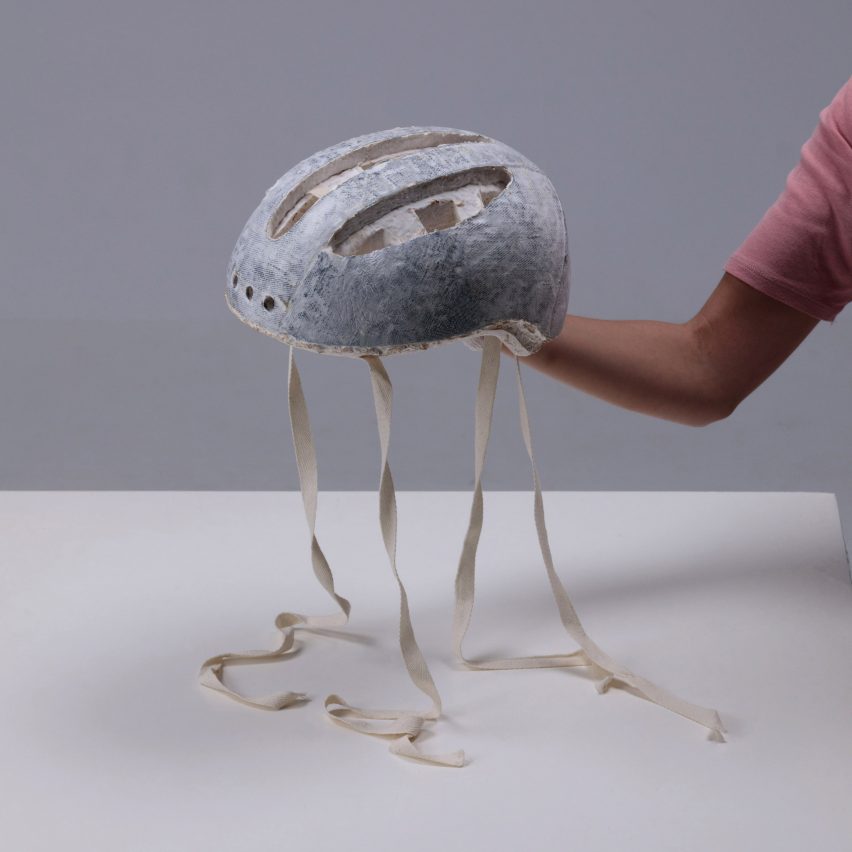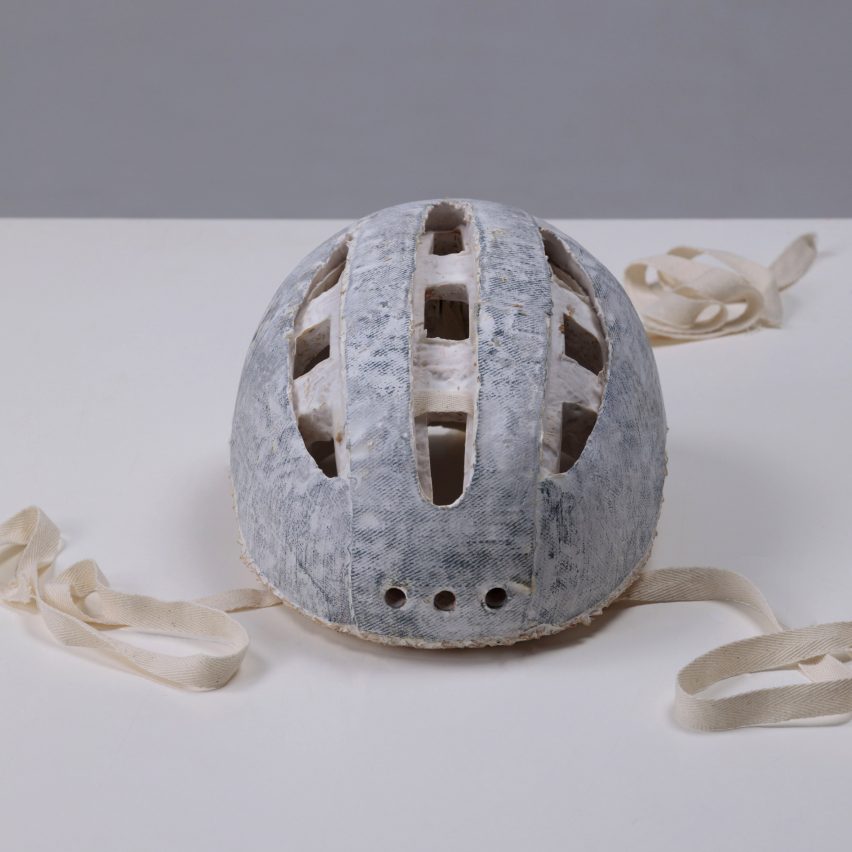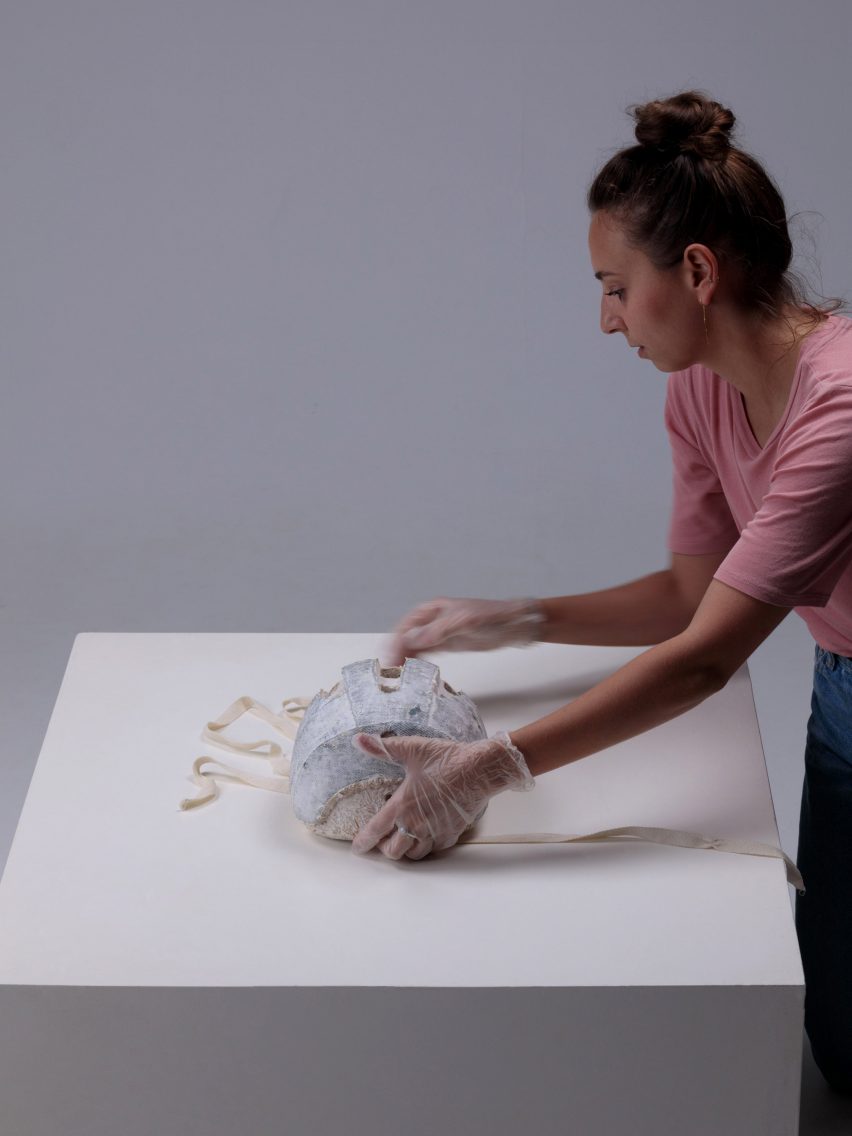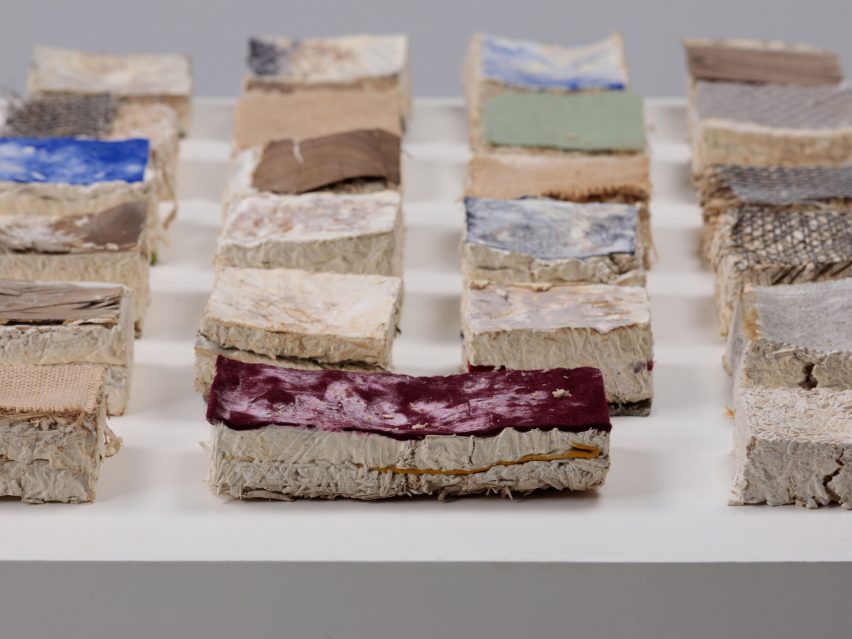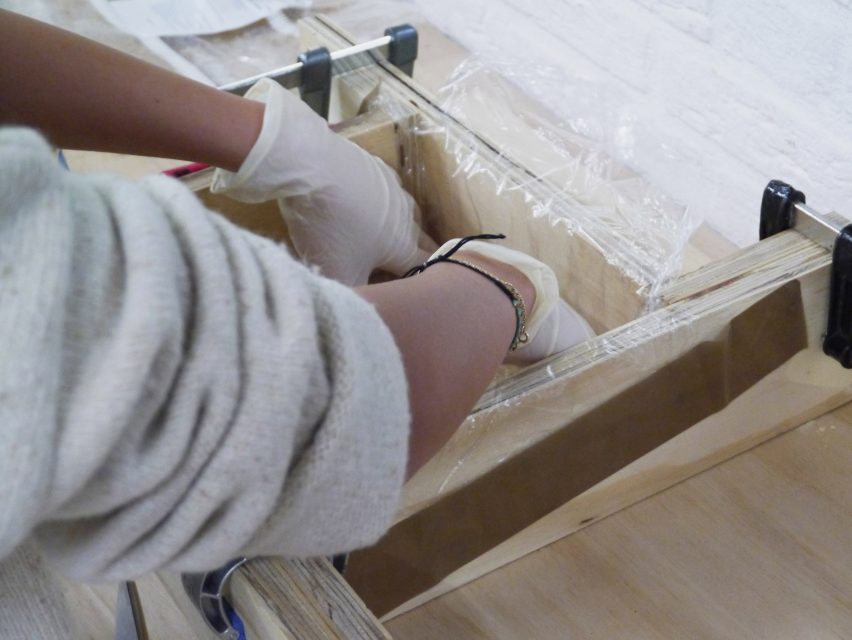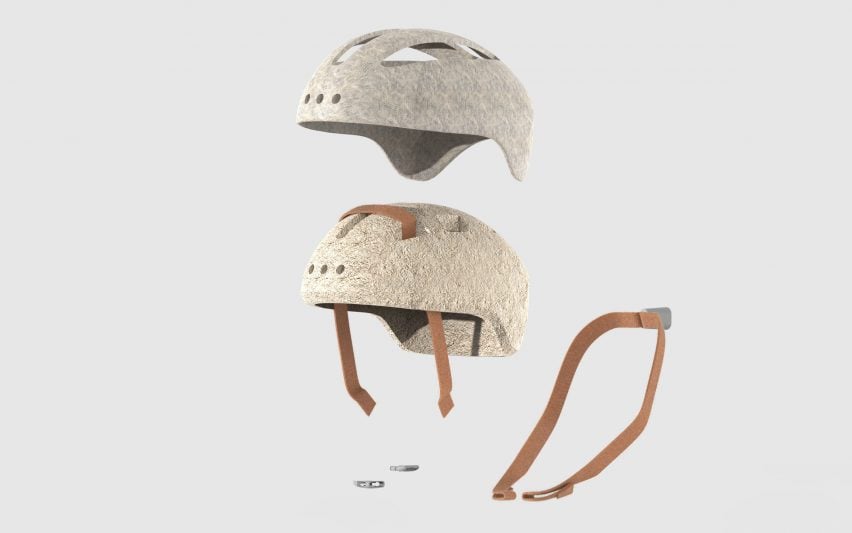An eco-friendly helmet made from waste scallop shells

Spotted: Each year, Soya district in northern Japan produces 40,000 tonnes of shells. This marine waste is an inevitable result of the fishing industry in Sarufutsu Village, which regularly wins the prize for Japan’s largest scallop catch. Until 2021, scallop shells were exported out of the country for re-use, but this trade has now ceased. And, while the shells are picked up and disposed of by companies for a fee, there have been issues with the shells being stacked in large piles before disposal.
Now, Sarufutsu village, along with creative agency TBWA\Hakuhodo, design startup Quantum, and plastics manufacturer Koushi Chemical Industry, has come up with a solution: an environmentally friendly helmet made from the discarded shells. In addition to cutting down on plastics, the ‘SHELLMET’ protects fishermen working in an industry that is notoriously dangerous, especially in a part of the world prone to natural disasters such as earthquakes, heavy rain, and snow.
Moreover, the SHELLMET contributes to a 36 per cent reduction in CO2 emissions compared to a helmet made from 100 per cent new plastic, as well as a 20 per cent reduction compared to limestone-derived eco-plastics. As a result, the eco-friendly helmet not only solves a particular problem facing the local community – it also demonstrates how waste materials can reduce environmental impact by replacing fossil-derived plastic.
The design of the SHELLMET is inspired by biomimicry – the application of the mechanisms of the natural world to technological development. After all, shells protect scallops and oysters in the wild, and the helmet’s design incorporates a special rib structure that mimics the shape of the scallop shells. The partnership claims this improves the helmet’s durability by around 30 per cent.
Other innovations spotted by Springwise that put marine waste to use include tiles made from fish scales, batteries made from crab shells, and shrimp shells used to strengthen concrete.
Written By: Matthew Hempstead

